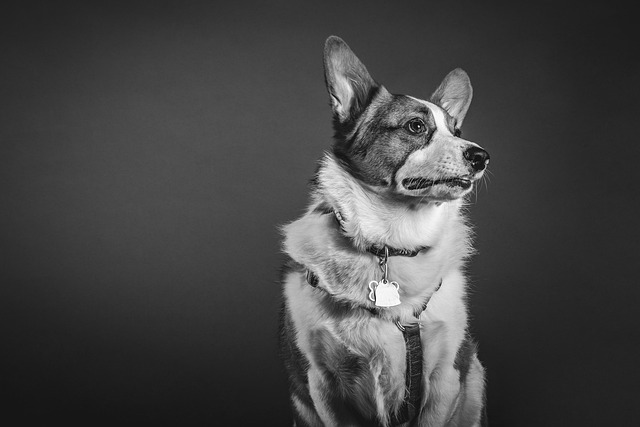
How does CBD affect puppies
Imagine you’re a new puppy parent in New York City, scrolling through social media while your 12-week-old golden retriever pup, Milo, chews on a shoe.
Every morning, I watch my neighbor's chocolate Lab, Max, practically vibrate with excitement as she laces up her running shoes. Yet down the street, another Lab named Bella seems perfectly content with a leisurely stroll around the block. This contrast perfectly illustrates something many Lab owners discover: Labrador Retriever exercise needs aren't one-size-fits-all. While breed guides might suggest a standard daily routine, the reality is far more nuanced and personal.
Understanding your specific Labrador's exercise requirements involves looking beyond generic recommendations. Sure, Labs are known for their boundless energy and athletic build, but each dog brings their own personality, health status, and life stage into the equation. I've seen energetic young Labs who need two hours of vigorous activity daily, while others thrive on shorter, more frequent sessions. The key lies in recognizing that exercise requirements for Labradors by age, temperament, and health create a unique fingerprint for each dog.
What makes this even more interesting is how these factors interconnect. A senior Lab with arthritis might still have the heart of an athlete but need gentle, joint-friendly activities. Meanwhile, a naturally calm puppy might surprise you with sudden bursts of energy that require immediate attention. This is why I always encourage Lab owners to think of exercise planning as an ongoing conversation with their dog rather than a rigid schedule.
Age serves as perhaps the most obvious starting point when considering how much exercise does a Labrador need daily. Puppies, those adorable bundles of chaos, actually need less structured exercise than many people assume. Their growing bones and joints are still developing, making them vulnerable to injury from excessive running or jumping. I typically recommend about five minutes of exercise per month of age, twice daily, for puppies. So a three-month-old pup might do well with fifteen-minute play sessions.
However, puppy exercise should focus more on mental stimulation and controlled play. Think puzzle toys, basic training sessions, and supervised socialization rather than long hikes. These little ones tire quickly but recover fast, often needing multiple short bursts of activity throughout the day. Their attention spans match their energy – intense but brief.
Adult Labradors, typically considered those between 18 months and seven years old, represent the marathon runners of the dog world. This is when Labs truly shine in their exercise capacity. Most healthy adult Labs benefit from 60 to 90 minutes of exercise daily, split between morning and evening sessions. But here's where individual differences become crucial – some Labs are satisfied with a brisk walk and backyard fetch, while others might need trail running or swimming to feel properly exercised.
Senior Labs, those wonderful gray-muzzled companions over seven years old, require a more thoughtful approach. Their spirits often remain willing, but their bodies may need gentler handling. Arthritis, decreased stamina, and other age-related changes mean adapting exercise routines. Shorter, more frequent walks often work better than long sessions, and activities like swimming can provide excellent low-impact exercise for aging joints.
The relationship between Labrador Retriever exercise and temperament creates another fascinating layer to consider. I've met Labs who seem hardwired for constant motion – they're the ones who bring you tennis balls at 6 AM and look disappointed when you suggest a quiet evening. These high-energy personalities often require more intensive exercise routines, including activities that challenge both their bodies and minds.
On the flip side, some Labs are naturally more contemplative. They enjoy exercise but don't demand it with the same intensity. These dogs might prefer longer, exploratory walks where they can sniff and investigate rather than high-intensity fetch sessions. Neither temperament is right or wrong – they're simply different expressions of the Lab personality.
What's particularly important is recognizing that a Lab's exercise needs can shift based on their mood, stress levels, and environment. A typically calm Lab might become more active during certain seasons or when facing changes in routine. Similarly, a usually energetic dog might have days when they prefer quieter activities.
Health considerations add another critical dimension to exercise planning. Labs are prone to certain conditions that directly impact their exercise capacity. Hip and elbow dysplasia, unfortunately common in the breed, can significantly affect how much and what type of exercise a dog can handle safely. Obesity, another concern for Labs who love their food, creates additional stress on joints and organs.
This is where health-based exercise for Labradors becomes essential. If your Lab has been diagnosed with joint issues, swimming might become their primary exercise method. Water provides resistance training while supporting their weight, reducing stress on problematic joints. For overweight Labs, exercise intensity might need to increase gradually while calorie intake decreases.
Heart conditions, while less common, also require careful exercise modification. Some Labs with heart murmurs or other cardiac issues can still exercise vigorously, while others need gentler routines. Eye conditions like progressive retinal atrophy might not affect exercise capacity directly but could influence the types of activities that are safe and enjoyable.
I always recommend consulting with your veterinarian when health concerns arise. They can provide specific guidance on exercise limitations or modifications. Sometimes what seems like laziness or behavioral issues actually stems from underlying health problems that make exercise uncomfortable or difficult.
Creating a personalized exercise routine for your Lab starts with honest observation. Watch how your dog responds to different activities. Do they seem energized or exhausted after a long walk? Are they destructive when they haven't had enough physical activity? Do they prefer social activities with other dogs or solo adventures with you?
Mental stimulation deserves equal weight with physical exercise. Labs are intelligent dogs who need their minds engaged. Puzzle feeders, training sessions, and scent work can tire a Lab as effectively as physical exercise. I often suggest mixing these activities throughout the week – perhaps alternating between longer physical sessions and shorter, mentally challenging ones.
Pay attention to signs of over-exercising, which can be just as problematic as under-exercising. Excessive panting that doesn't resolve quickly, limping, reluctance to continue activities, or behavioral changes might indicate you're pushing too hard. Similarly, destructive behavior, excessive barking, or restlessness often signal insufficient exercise.
Weather plays a significant role in exercise planning too. Labs generally handle cold weather well, but extreme heat requires modifications. Early morning or evening exercise during hot weather, providing plenty of water, and recognizing signs of overheating become crucial safety considerations.
The beauty of owning a Labrador lies partly in their adaptability. With thoughtful observation and gradual adjustments, most Labs can develop exercise routines that keep them healthy and happy while fitting into their family's lifestyle. Whether your Lab turns out to be a hiking companion, a swimming enthusiast, or a neighborhood walking buddy, the key is finding activities that match their individual needs and capabilities.
Building this personalized approach to Labrador exercise creates stronger bonds between you and your dog while promoting their long-term health. Every Lab deserves an exercise routine that celebrates their unique personality while keeping them physically and mentally satisfied. By considering age, temperament, health, and individual preferences, you're not just meeting their exercise needs – you're enhancing their quality of life and strengthening the special relationship that makes Labs such beloved companions.

Imagine you’re a new puppy parent in New York City, scrolling through social media while your 12-week-old golden retriever pup, Milo, chews on a shoe.

Picture this: your Labrador, Luna, just delivered six squirming puppies in your Chicago apartment. Overwhelmed by their tiny whimpers

Nothing breaks your heart faster than seeing your usually energetic pup curled up, refusing treats and whining in discomfort.

Finding a thin layer of short dog hair on your couch, clothes, and even in your morning coffee can be frustrating. While shedding is a natural process for dogs, there are ways to minimize it and keep your home a bit more fur-free.

Imagine coming home to your Boston apartment after a quick errand to find your 1-year-old rescue mutt, Milo, has chewed through your favorite sneakers and left a puddle by the door

You’ve just received a noise complaint from your Brooklyn apartment neighbor: your rescue Lab, Charlie, howled relentlessly for two hours after you left.